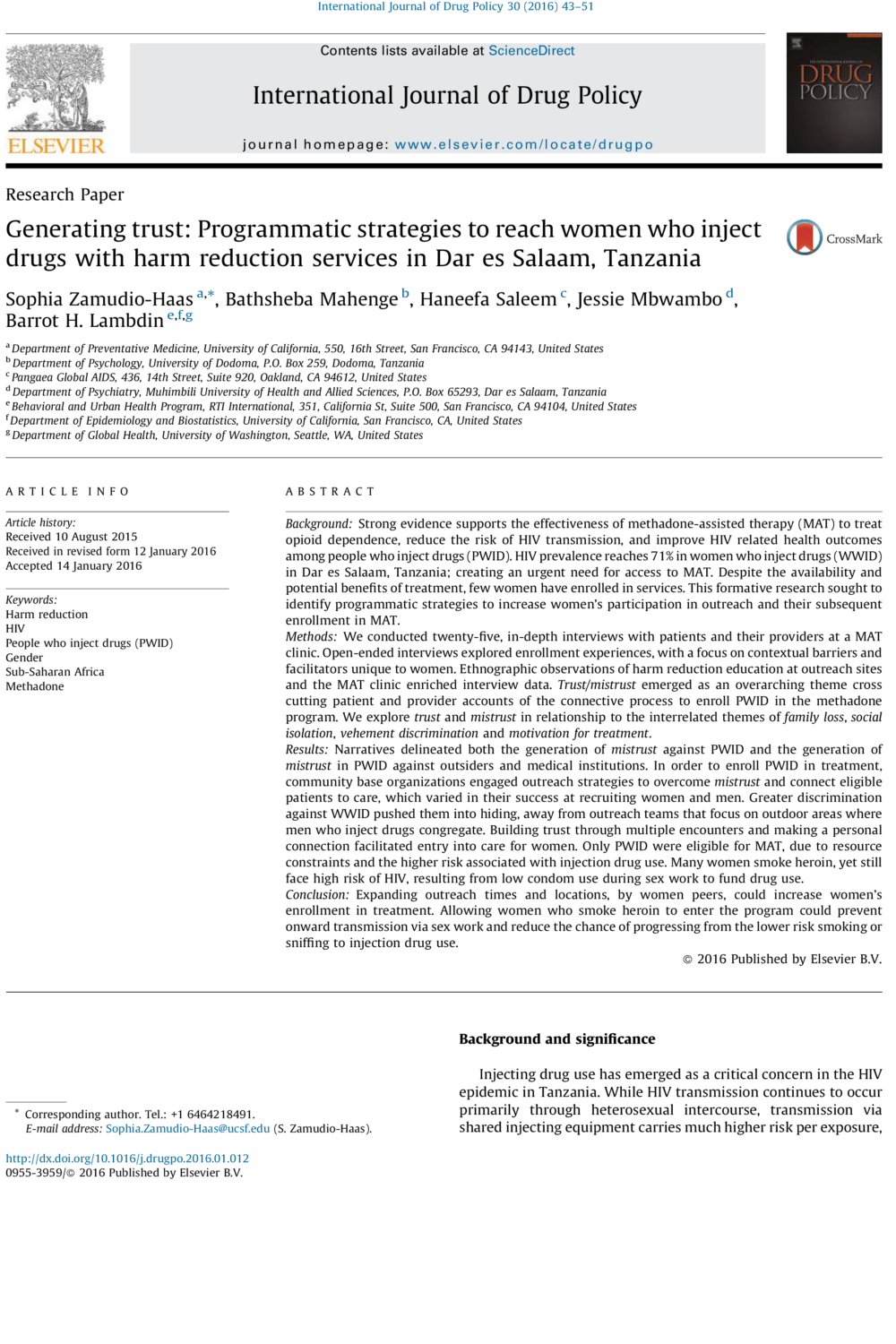Injecting drug use has emerged as a critical concern in the HIV epidemic in Tanzania. While HIV transmission continues to occur primarily through heterosexual intercourse, transmission via shared injecting equipment carries much higher risk per exposure, making it imperative to reach people who inject drugs (PWID) with prevention and treatment services (Metzger & Zhang, 2010; Sullivan, Metzger, Fudala, & Fiellin, 2005).
Port cities along the coast of East Africa have been involved in heroin trade routes between countries that supply in the Middle East and consumer markets in Europe and North America since at least the mid-1980s (Ross, McCurdy, Kilonzo, Williams, & Leshabari, 2008). However, a recent surge in the availability of strong, cheap heroin to urban populations has contributed to growth in injecting drug use in Dar es Salaam (McCurdy, Williams, Kilonzo, Ross, & Leshabari, 2005; McCurdy, Ross, Kilonzo, Leshabari, & Williams, 2006; UNODC, 2013).
Easy access to heroin combined with myriad social and economic forces, such as rapid urban migration, lack of employment for youth, and limited mental health care, have further contributed to a rise in injecting drug use (Acuda, Othieno, Obondo, & Crome, 2011; McCurdy et al., 2005). The Tanzania Drug Control Commission estimates that 50,000 people inject drugs nationally (TDCC, 2010). Women’s participation in sex work to fund drug use raises the chance of PWID to act as a bridge population, potentially reversing downward trends in HIV incidence and fueling new infections (Bruce, 2010).
In Dar es Salaam, HIV prevalence in PWID has reached crisis proportions. Research estimates that 42% to 50% of PWID in Dar es Salaam are living with HIV (Ross et al., 2008; Williams et al., 2007, 2009), compared to an estimated 6.9% prevalence in the general urban population (Tanzania Commission for AIDS (TACAIDS), Zanzibar AIDS Commission (ZAC), National Bureau of Statistics (NBS), Office ofthe Chief Government Statistician, ICF International (ICF), 2013).
Economic and social inequities create heightened vulnerability in women who inject drugs (WWID), who are more likely to be homeless and experience abuse than their male counterparts (McCurdy, Ross, Williams, Kilonzo, & Lesabari, 2010; Williams et al., 2007). Gendered risk-taking behavior, such as sex work and sharing equipment with other women in communal settings, contributes to a higher burden of HIV disease among women (McCurdy et al., 2010; Williams et al., 2007). In WWID in Dar es Salaam, HIV prevalence is estimated at 71% (Nyandindi et al., 2013).
